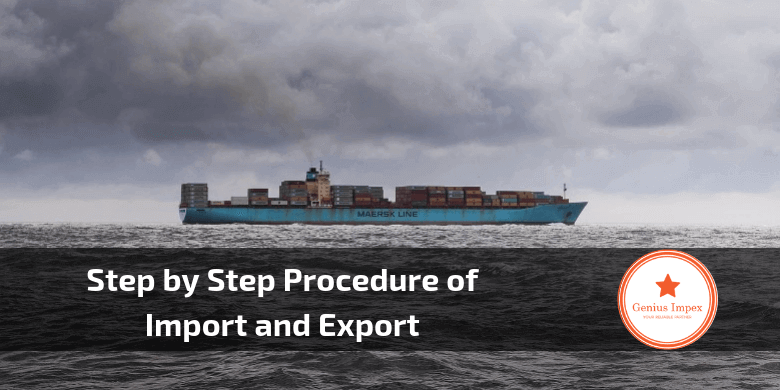Buying and selling of goods to foreign countries refer to international trade. International trade includes the import and export of the product. Both import and export business are very helpful in the development of relation between two different countries, and it is also useful in the country’s economy. In import, you buy products from the foreign country to sell it in your country and in export you sell your local manufactured product to the international market.
What is Import?
Import is purchasing the goods from a foreign country to sell it in the local market. You can say that buying of goods to meet local demands is known as the import. People import that product in the country which is either cheap or does not manufacture locally. It also builds the relationship with the other countries.
What is Export?
Export is selling your goods to the foreign country. You can say that selling the manufactured or produced product to the international market is known as export. Exporting products creates opportunities to build a relationship with the foreign country. Export also adds up in the trade surplus of the country.
What is the Difference between Import and Export?

Following are the main differences between import and export.
- Import trade is buying goods from other countries while export trade is selling your goods to other countries.
- Import examples are products that your country does not produce or manufacture like In Pakistan; people import Japanese cars, high tech products, etc. Export examples are the products that your country manufacture or produce like in Pakistan; people export furniture, mangoes, oranges, surgical instruments, etc.
- If the currency of the country is weak then the import level decreases, and export level increases and if the currency of the country is strong then the import level increases and export level decreases.
- If the import increases then the country has a trade deficit and if the export increases then the country has a trade surplus.
- Import and export both are good in profit ratio for the importer and exporter due to the factors involving currency exchange and international trade.
Also Read: How to Find Buyers for Export Products
What is the difference between Import and Export Procedure?
Let me tell you step by step procedure of both import and export.
Import Procedure

Following are the Import trade procedure in order.
Trade Inquiry
The import procedure starts with the trade inquiry that what percentage of countries and companies export the required merchandise. So the importation company must acquire all the main details from trade directories and trade associations. When obtaining the specified data, the importation firm communicates with the firm that is exporting goods to understand their rates and terms of delivery.
Getting Import License
Not all goods require the import license, just a few of them are subject to the import license. So, the importer has to get all the knowledge about the import export policy to know about the policy of the goods whether it requires an import license or not.
Procurement of Foreign Exchange
The importer has to obtain the foreign exchange rates in order to deliver the payment to the exporter.
Order Placement
The importer places the order for the product from the exporter of the foreign country. The order details contain quality, price, color, quantity, etc. of the product.
Letter of Credit
After the order placement and agreement of the payment term between the buyer and seller, then the person or company who is importing the product should acquire the letter of credit from its bank. This letter shows the credibility of the payment.
Arranging Payment
The importer needs to arrange all the payment before the arrival of the product at the port.
Advice of Shipment
It is the letter from the exporter to the importer informing about the complete details of the shipment. The detail contains vessel number, port of export, description of the product, bill of lading number, and invoice number.
After product shipment, the exporter compiles the important documents and provides it to the banker for further transfer, as mentioned in the letter of credit.
Goods Arrival
After the loaded goods shipment arrives at the port the ship in charge informs and provides the documents regarding goods and import general manifest to the dock officer.
Custom Clearance
The last procedure is customs clearance, once the product arrives in the country, then you need to clear the customs, in order to release your goods. You need to provide the number of legal documents and customs fee to the customs officer to get it released.
Export Procedure

Following are the export trade procedure in order.
Product Inquiry and Sending Quotation
When you contact the buyer, he sends an inquiry about the product and requests the quotations of the product. Then the exporter sends the detailed quotation of the product such as color, quality, grade, weight, size, delivery terms, packing details, and payment method.
Order Placement
Once the importer agrees on all the mentioned details, terms and conditions of the supplier, he places an order.
Credibility of the Importer
The exporter demands a letter of credit to know the credibility of the importer after the order is placed. The letter is required to ensure the payment is not faulty.
Export License
The exporter requires the export license in order to export its goods. There are certain legal formalities to fulfill to acquire an export license.
Production of Goods
After having the order and completing the requirements of export, the exporter starts the production of the goods according to the importer’s requirement.
Quality Control or Inspection
It is necessary to check the quality of the product before shipment in order to avoid any problem. There are companies who provide pre-shipment inspection services to the exporters to ensure the quality of the goods.
Certificate of Origin
The importer requires the certificate of origin to make sure that the product is made in that country.
Space Reservation for Shipment
During production, the exporter goes to the shipping firms for the space reservation for the shipment. The exporter specifies the shipment date, delivery port destination, and nature and type of the exported product to the shipping firm.
Packing and Forwarding
After completing the production and all the legal documentation, goods are packed carefully for delivery after that transportation is arranged to transfer the good to the port for shipment.
Goods Insurance
Mostly exporters insure their goods to reduce the risk of damage and loss during transit.
Custom Clearance
The goods must be custom cleared before loading on the ship.
Providing Bill of Lading
After paying the freight charges exporter obtains the bill of lading which he provides to the importer for the confirmation of the shipment.
Final Words
You can directly import or export the product to the foreign market, or you can import export service providers to do the job for you. This article will help you start your import export business with ease because it tells you all the procedures for import export.










